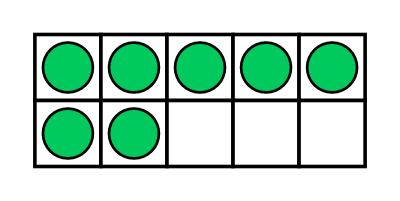Hi there, fellow educators and parents!
I’m so glad you’re here — today we’re diving into one of my favorite math tools: ten frames ! Whether you’re teaching in a classroom or working with your child at home, ten frames are an amazing way to help young learners build number sense, counting skills, and even prepare for addition and subtraction.
In this guide, you’ll learn:
Let’s explore what ten frames are, how they help kids learn, and some fun activities you can try right away!
A ten frame is a simple grid made up of 10 squares (2 rows of 5) . It helps children:
It’s like a “number house” where dots live!
Children fill the boxes with counters, dots, stickers, or drawings to show quantities.
For example, if 7 boxes are filled, the child sees “7” as a visual pattern — not just an abstract symbol. This builds subitizing (instant recognition of small quantities) and lays the foundation for addition, subtraction, and place value.

Ten frames are powerful because they help kids develop number sense — that “gut feeling” about numbers and how they work together.
They’re especially helpful for visual learners, ESL students, and children who benefit from hands-on math activities.
Here are some easy and effective ways to use ten frames:
Use ten frame cards and ask:
👉 “How many do you see?”
This builds subitizing skills (recognizing small groups without counting).
Practice combinations that make 10:
👉 Show 6 dots. Ask: “How many more to make 10?”
This is a key skill in kindergarten and sets the stage for future fact fluency.
Use two ten frames side by side:
👉 For 7 + 4 = ?, fill one frame with 7 and add 4 more on the second.
You’ll start to see regrouping ideas emerge naturally!
These games keep kids engaged and thinking deeply about numbers.
Ready to get started? I offer a growing collection of free, no-signup-needed materials: